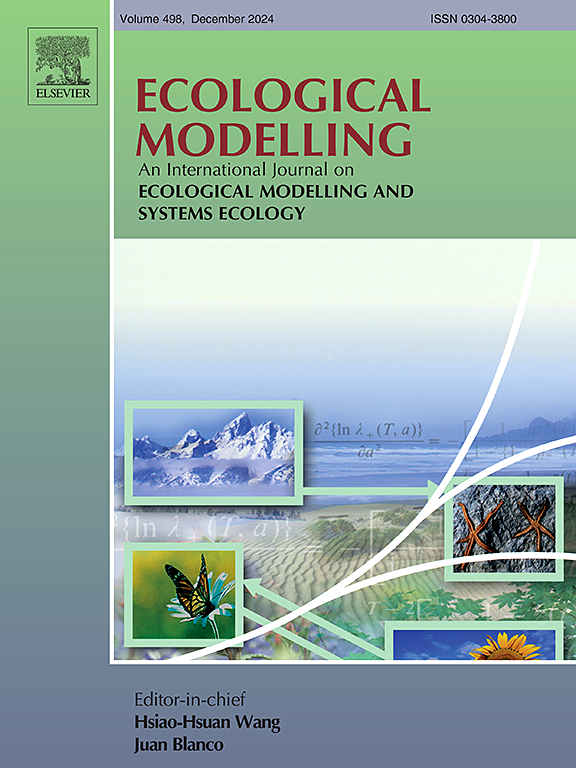Attractor of a neutral individual-based forest model captures spatiotemporal structure characteristics of a mature tropical forest
IF 2.6
3区 环境科学与生态学
Q2 ECOLOGY
引用次数: 0
Abstract
Like other ecosystems, a forest never reaches a static equilibrium (climax), but ends up on a stochastic attractor, as a few dynamical systems approaches have shown. Here, we follow a tropical evergreen South American forest in French Guyana, which has not been anthropically perturbed for around 200 years, and then only in minor ways (and there have been no large scale perturbations since around 500 years ago). This study presents both experimental data and a modelling approach. Our data consists of measurements of the leaf area index (LAI) at high resolution along thirteen 512 m-long transects in July of 2000, 2009, and 2018. For each transect we plot the mean LAI () against its standard deviation (). We find that each transect follows a trajectory in -space which is confined to an oval-shaped domain. A strong change is observed between 2000 and 2009, with lower and higher , on average, hinting at temporal environmental degradation. However, the average values over all transects in 2018 show a quasi-return to the 2000 values. This is explained by a rainfall deficit in 2009, but does not exclude the possibility of a systematic drift in the future. In the modelling part, we improved upon the very simple cellular automata type model used in previous work by incorporating a more realistic description of tree life and death, and it successfully reproduces the dynamic behaviour of the real forest. The fact that such a simple model gives a very good description of the forest behaviour is strong evidence for the efficacy of a dynamical systems approach to the understanding of real forest ecosystem dynamics.
求助全文
约1分钟内获得全文
求助全文
来源期刊

Ecological Modelling
环境科学-生态学
CiteScore
5.60
自引率
6.50%
发文量
259
审稿时长
69 days
期刊介绍:
The journal is concerned with the use of mathematical models and systems analysis for the description of ecological processes and for the sustainable management of resources. Human activity and well-being are dependent on and integrated with the functioning of ecosystems and the services they provide. We aim to understand these basic ecosystem functions using mathematical and conceptual modelling, systems analysis, thermodynamics, computer simulations, and ecological theory. This leads to a preference for process-based models embedded in theory with explicit causative agents as opposed to strictly statistical or correlative descriptions. These modelling methods can be applied to a wide spectrum of issues ranging from basic ecology to human ecology to socio-ecological systems. The journal welcomes research articles, short communications, review articles, letters to the editor, book reviews, and other communications. The journal also supports the activities of the [International Society of Ecological Modelling (ISEM)](http://www.isemna.org/).
 求助内容:
求助内容: 应助结果提醒方式:
应助结果提醒方式:


